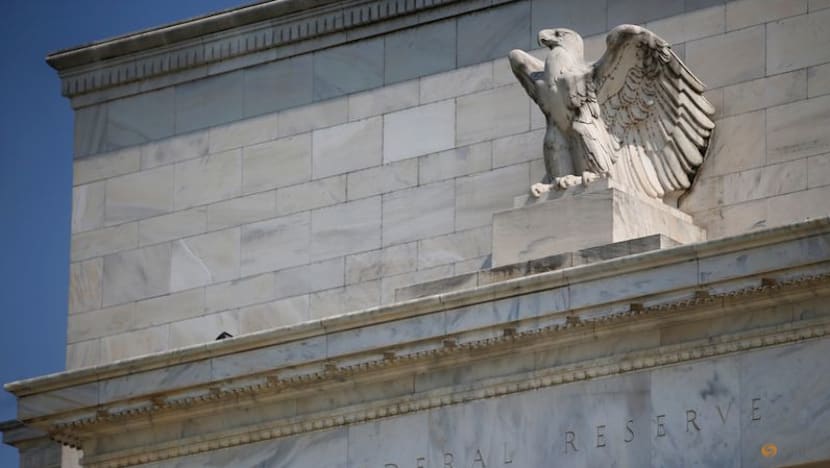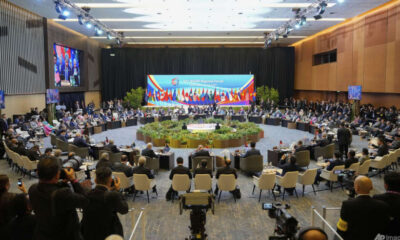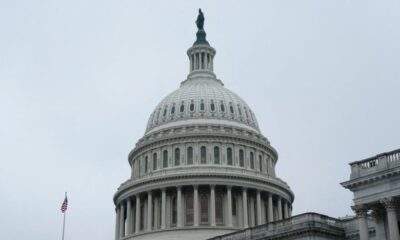Top Stories
Fed Cuts Rates: Singapore Investors Face New Risk Dilemmas

The United States Federal Reserve announced a significant reduction in interest rates on September 17, 2023, cutting them to a range of 4 percent to 4.25 percent, the lowest level since late 2022. This marks the first rate cut in nine months, a decision described by Fed Chair Jerome Powell as a “risk management” response to a weakening labour market. As the Fed is projected to lower rates twice more this year, Singapore investors accustomed to low-risk investments, such as fixed deposits, may need to reassess their financial strategies.
The Fed’s decision creates pressure on low-risk investors in Singapore to explore alternative avenues for better yields. According to investment experts, the prevailing global interest rates significantly influence local fixed deposit rates. Mr. Vasu Menon, the managing director of investment strategy at OCBC, emphasizes that seeking alternative investments may lead to higher returns but also increases exposure to equity risks and market volatility. “Investors must have the risk appetite and ideally a medium-term horizon to ride out short-term volatility,” he stated.
Impact on Singapore’s Interest Rates
While the Monetary Authority of Singapore does not set interest rates independently, local rates have recently diverged from international trends due to substantial capital inflows. Mr. Glenn Thum, a research manager at Phillip Securities Research, noted that many investors are shifting their funds from US dollars to Singapore dollars or Hong Kong dollars, creating fluctuations in the market.
The recent influx of capital has led to a decrease in the main interest rate benchmark, known as the Singapore Overnight Rate Average (SORA). UOB’s senior foreign exchange strategist, Peter Chia, reported a significant drop in SORA throughout 2025, largely driven by abundant domestic liquidity and safe-haven capital inflows. He cautioned that, despite the Fed’s actions, it may prove challenging for SORA to decline further, as expectations for a broad-based recession in either the US or Singapore remain low.
In Singapore, interest rates for fixed deposits have been on a downward trajectory since the post-pandemic recovery. Fixed deposit promotions that peaked at around 2.5 percent to 3 percent in 2022 and 2023 have moderated to approximately 1.5 percent to 1.6 percent per annum for standard tenors. Additionally, banks have reduced interest rates on savings accounts, with UOB announcing cuts to its flagship savings account and OCBC revising maximum effective interest rates for its OCBC 360 account holders.
Exploring Alternative Investments
With the likelihood of further declines in US rates, Mr. Menon highlighted that fixed deposit rates could become increasingly unattractive for investors who rely on them for savings growth. He noted that while alternative investments could yield better returns, they inherently carry greater risks. “Investors must embrace greater risk for better returns,” he explained.
Despite the potential benefits, many Singaporean investors exhibit a low to medium risk appetite. According to OCBC’s 2024 Financial Wellness Index, 34 percent of investors reported a low risk appetite, with only 7 percent aiming for high returns. Mr. Song Seng Wun, an economic advisor at CGS International Securities, cautioned that while exploring alternative investments may seem appealing, it ultimately depends on individual risk tolerance. For younger investors, diversifying portfolios through online brokerage firms may offer new avenues for growth.
Mr. Menon recommended that investors maintain at least three to six months of emergency savings before venturing into riskier investments. He also advised constructing a diversified portfolio to mitigate risks rather than concentrating investments in specific stocks or sectors.
While the Fed’s interest rate cuts pose challenges for traditional savings strategies, they also present opportunities. Fixed-rate mortgages are now available at rates ranging from 1.7 percent to 1.9 percent, down from over 3 percent a year ago, according to Mr. Chia from SingCapital. This reduction opens up refinancing opportunities for households but encourages caution against overextending financial commitments due to lower rates.
As businesses also benefit from reduced financing costs, they must remain vigilant of global challenges such as trade tariffs and geopolitical tensions. In this evolving financial landscape, both households and businesses are advised to balance immediate benefits with long-term financial prudence.
-

 Lifestyle3 months ago
Lifestyle3 months agoHumanism Camp Engages 250 Youths in Summer Fest 2025
-

 Sports3 months ago
Sports3 months agoDe Minaur Triumphs at Washington Open After Thrilling Comeback
-

 Business4 months ago
Business4 months agoKenvue Dismisses CEO Thibaut Mongon as Strategic Review Advances
-

 Sports4 months ago
Sports4 months agoTupou and Daugunu Join First Nations Squad for Lions Clash
-

 Top Stories4 months ago
Top Stories4 months agoColombian Senator Miguel Uribe Shows Signs of Recovery After Attack
-

 World4 months ago
World4 months agoASEAN Gears Up for Historic Joint Meeting of Foreign and Economic Ministers
-

 Business4 months ago
Business4 months agoOil Prices Surge Following New EU Sanctions on Russia
-

 Health3 months ago
Health3 months agoNew Study Challenges Assumptions About Aging and Inflammation
-

 Entertainment3 months ago
Entertainment3 months agoDetaşe-Sabah Violin Ensemble Captivates at Gabala Music Festival
-

 Entertainment3 months ago
Entertainment3 months agoBaku Metro Extends Hours for Justin Timberlake Concert
-

 Business4 months ago
Business4 months agoU.S. House Approves Stablecoin Bill, Sends to Trump for Signature
-

 Top Stories4 months ago
Top Stories4 months agoRethinking Singapore’s F&B Regulations Amid Business Closures









